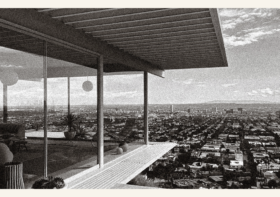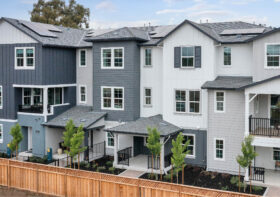Inspirational Places in Arizona – Part Two | Taliesin West
A pair of hotel projects for Albert MacArthur and later, Alexander Chandler, brought Frank Lloyd Wright to Arizona in the late 1920’s. According to author Lawrence Cheek, Wright found the desert to be, “…a vast, blank canvas on which he could impose his vision, unconstrained by the surroundings of a built-up city; and it was an open air warehouse of natural forms, colors and textures that both delighted and inspired him.”
Wright’s journey to the desert was equal parts escape and catharsis. His Wisconsin home, Taliesin, played host to an horrific series of ‘well-chronicled’ events, including financial troubles, infidelity, fire, divorce and even a murder. A suggestion from his doctor to seek dryer climates, coupled with Wright’s new infatuation with the desert, led him to seek out a location to build Taliesin West. In 1933, Wright and his “fellowship” of students began traveling to Arizona for winters. In 1937, Wright discovered the raw land that would become the fellowship’s permanent winter home. Education came out of the very construction of the place, as well as Wright’s daily lectures and presence.
Although Wright had earned a reputation of not being frugal with his clients’ money, his own construction projects, like Taliesin West, were financially, and architecturally efficient. An approach called ‘desert masonry’ was employed whereby large local boulders were loaded into a wood framework and concrete was poured into the remaining spaces. Flat-sided boulders were artfully positioned against the forms to create walls and other primary structural support elements. Wright himself determined the location and orientation of each boulder. The wood formboards would be stripped away and reused, furthering Wright’s commitment to construction efficiency. The forms and materials seem to emerge and emulate the colors and shapes of Nature (Wright always capitalized the word Nature in his writings). Stretched canvas roofing was used to bring in diffused natural light, rather than artificial light. Legend will remind visitors that a professional ‘dowser’ once proclaimed that Wright had somehow ‘mystically’ selected the perfect location, in the entire McDowell Mountain area, to drill for water – although some level of embellishment is suspected.
“The Arizona desert is no place for the hard box-walls of the houses of the Middle West and East. Here all is sculpted by wind and water, patterned in color and texture. Rocks and reptiles no less so than the cacti.” – F. LL. W.
Ultimately, the grounds included reflecting pools and fountains, a drafting room, a kitchen, a dining hall, a garden room, apartments for the fellowship as well as living quarters for Mr. and Mrs. Wright, and a Kiva; a small dinner theatre for the enjoyment of music and movies with impeccable acoustics.
On a personal note, Taliesin West is a beautiful example of what architecture can be, and should be. The most lasting thought that I acquired during my visit was centered around simple ‘teepee’ structures in which students would live for several days, not as any disciplinary action, but simply this: a ‘stripping away’ of architectural preconceptions in order to fully and viscerally understand the true necessities of human life: water, food (internal warmth) and shelter (external warmth), for it is these basic needs that inspire the charge and great purpose of the endeavor of architecture.









Leave a Reply